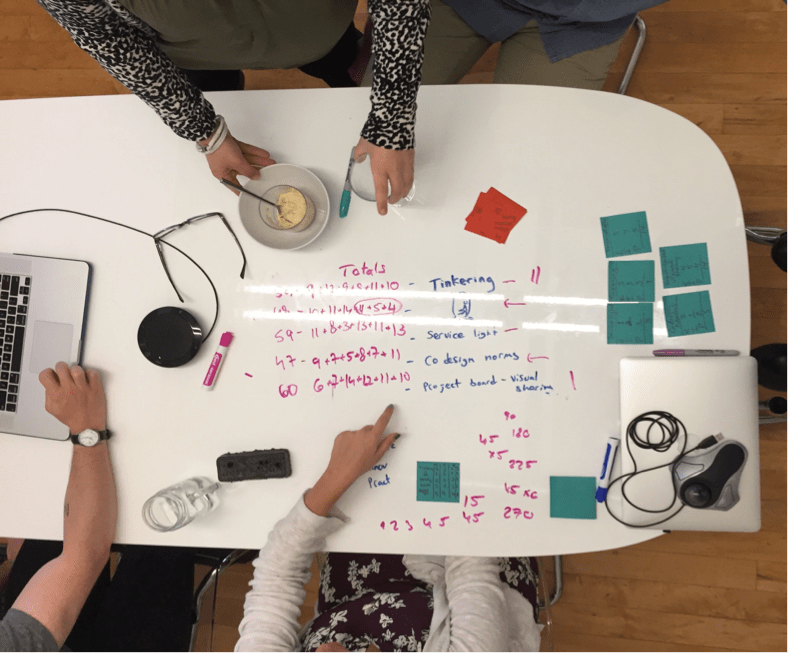Instructors and learning designers in higher education are stretched thin. In our recent survey, published in the Digital Learning Innovation 2017 Report, 100% of university administrators, instructional designers, and instructors rank “Not enough time” as the biggest barrier to successful learning innovation.
The survey also found that, although educators believe in the power of digital learning solutions to positively impact teaching and learning practices, only 26% of instructors feel they are successfully using technology to increase the amount of time they spend interacting with and assisting students.
While disappointing, this statistic is understandable; only 61% of surveyed educators have some centralized teaching and learning resources supporting their effort to research and deploy innovative L&T solutions.
How can educators tap into the benefits of digital learning integration without overspending their scarce time?
At Smart Sparrow, we are intimately familiar with this challenge. In fact, our Learning Design Studios are dedicated to working with educators to improve the efficacy of their teaching through digital courseware. We asked Learning Designers from our U.S. Studio for efficient ways to create more engaging digital content that will lead to student success. Here are their five top tips for efficient design and getting the most benefit out of digital or blended courses.
Tip 1: Know What You’re After
The world of digital learning is often intimidating in its vastness. To avoid getting lost in the possibilities, educators should approach digital learning with a clear idea of their desired outputs. Our learning designers do this by starting with the learning objectives for each lesson they create, and then think about how best to help learners meet those objectives.
This method, known as backward design, has been utilized by educators in classroom settings for years. Digitally it’s no different, but it is equally, if not more, imperative to the design of an effective digital learning experience. Start with the end goals in mind, and save yourself a headache as you plan and execute.

Tip 2: Get to Know your Learners
One of the first things our Studios do is create profiles of different learners expected to take a course. They call these “Learner Personas,” and they help make sure the learning solution provided makes sense for the future students.
To do this, Learning Designer Grace Dover explains, “We research a lot of different elements, like where these students are coming from, what their experience level is with the topic, what potential misconceptions they might have, what feelings they have towards that subject,” and more. They also extrapolate from these data to create an emotional profile for the learners. For example if students are enrolled in a science lab and “haven’t taken much science and feel intimidated coming into the class… that would be an important thing to know in order to design ways to help them feel more comfortable.” With this, you’ve got the cornerstones of learner-centered design.
This step might seem like a large time investment, but Learning Designer Jillian Mochnick insists that it’s worth it. “This is a step that educators are often skeptical about,” she notes, “because there’s a misconception that if you already know your students, you don’t need to do this. But to go through this process and take the time to really look at the data can be surprising, and leads to the best learning experiences.”
Tip 3: Design for the Digital Medium
“When you have in-person content, making it into a digital lesson can be a rough transition,” says Jillian. “It’s easier when you understand that they’re two different beasts,” offers Grace.
When you have in-person content, making it into a digital lesson can be a rough transition. It’s easier when you understand that they’re two different beasts.
Teaching a fully digital or blended course gives you the chance to get creative and think about teaching in ways you never have before. Learning Designer Ali Siddiqui recommends instructors challenge themselves to think differently, and ask “How can I use what is newly available to me with this different toolset?”
In Smart Sparrow’s Learning Design Studios, designers make digital content engaging by making it extremely interactive and responsive to student needs. Grace encourages instructors to leverage this strength, and hearken back to their 1-on-1 skills to engage students on a more personalized level again. “Lean into those tutoring skills when you’re making lessons because this is where you can go further. You can take your lecture content and make it even better for every student.”

Tip 4: Use Data Strategically
Digital learning environments usually offer a bevy of student data. On a platform like Smart Sparrow, instructors gain the ability to gather real-time insight into learner performance that is otherwise impossible to gain through traditional teaching methods. Instructors can utilize this information to ensure student comprehension and improve success throughout a course.
Unfortunately, most of this goes unused. In the Digital Learning Innovation 2017 Report, it was found that just 36% of respondents regularly review student performance data. Making use of the performance and assessment data offered by teaching in the digital medium can save time on grading, diagnosing and assisting at-risk students, and identifying pedagogical inefficiencies.
Many educators who teach with the Smart Sparrow platform use their digital learning space to give students a first look at upcoming content they will cover. Then, based on students’ performance and feedback, they use in-person class time to correct common errors and review concepts students struggled with most.
Tip 5: Find Your MVP
The sky is the limit with digital content, but we’ve already established that most educators lack the time to craft heavily-involved digital masterpieces.
Our learning designers suggest starting by designing your “MVP”, or minimum viable product. This is a version of your lesson or content that includes just what is absolutely necessary to meet learning objectives. Set a realistic timeline to develop that first stage and start working. If you beat your timeline, add more. Otherwise, deploy the first version, review learner performance data, collect student feedback, and then work to expand and improve the learning experience for next term. Breaking up your process into stages can help improve content and strengthens educators’ understanding of student learning needs. Remember, there’s no such thing as a perfect first try!
One of the biggest advantages of creating digital learning experiences is that it enables cycles of continuous improvement over time, as should be the case in any great learning experience.
Keep learning about what it takes to create high-quality digital learning experiences and get more insight into the current state of digital learning innovation in higher education by downloading the full report.



